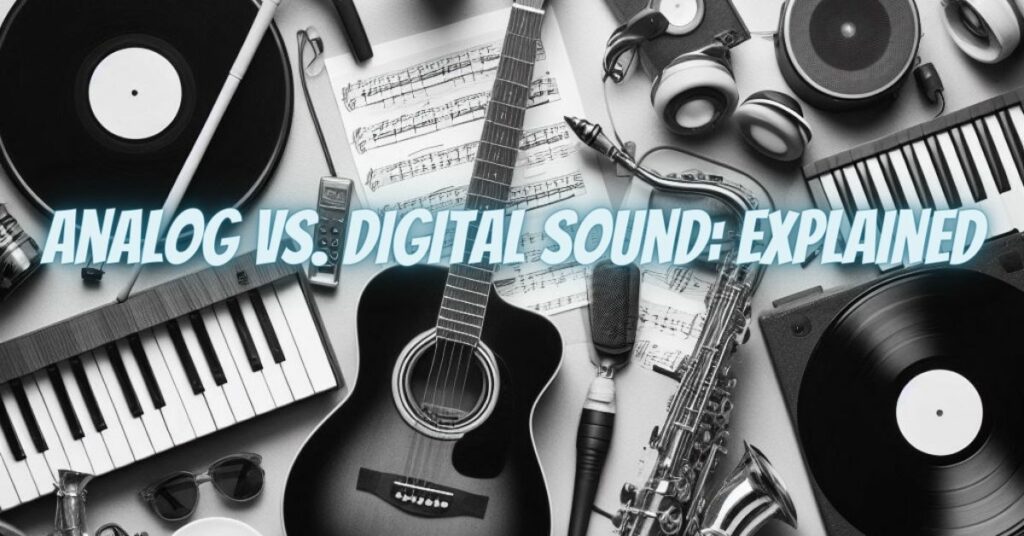Analog and digital sound are two different ways of representing and reproducing sound waves. Analog sound is a continuous signal, while digital sound is a discrete signal. This means that analog sound can contain more information than digital sound, but it is also more susceptible to noise and distortion.
Analog sound
Analog sound is the original form of sound recording and reproduction. It works by converting sound waves into electrical signals, which are then stored on a physical medium, such as vinyl, tape, or film. When the recording is played back, the electrical signals are converted back into sound waves.
Analog sound is a continuous signal, which means that it has an infinite number of possible values. This allows analog sound to capture a wide range of frequencies and dynamics, resulting in a rich and natural sound quality.
However, analog sound is also more susceptible to noise and distortion than digital sound. This is because the physical medium used to store the recording can be damaged by scratches, dust, and other factors. Additionally, the electrical signals used to represent the sound waves can be degraded by electronic noise.
Digital sound
Digital sound is a more modern way of recording and reproducing sound. It works by converting sound waves into a series of numbers, which are then stored on a digital storage medium, such as a CD, hard drive, or flash drive. When the recording is played back, the numbers are converted back into sound waves.
Digital sound is a discrete signal, which means that it has a finite number of possible values. This limits the amount of information that digital sound can capture, but it also makes digital sound more resistant to noise and distortion.
Digital sound is less susceptible to noise and distortion than analog sound because the digital storage medium is not affected by physical damage, and the numbers used to represent the sound waves are not affected by electronic noise.
Comparison of analog and digital sound
The following table summarizes the key differences between analog and digital sound:
| Characteristic | Analog sound | Digital sound |
|---|---|---|
| Signal type | Continuous | Discrete |
| Information capacity | High | Lower |
| Susceptibility to noise and distortion | More susceptible | Less susceptible |
| Sound quality | Warm, rich, natural | Cleaner, more precise |
| Storage medium | Vinyl, tape, film | CD, hard drive, flash drive |
Advantages and disadvantages of analog and digital sound
Analog and digital sound both have their own advantages and disadvantages.
Advantages of analog sound:
- Warmer, richer, more natural sound quality
- Can capture a wide range of frequencies and dynamics
- Less susceptible to clipping and other digital artifacts
Disadvantages of analog sound:
- More susceptible to noise and distortion
- Physical medium can be damaged
- More difficult to edit and manipulate
Advantages of digital sound:
- More resistant to noise and distortion
- Digital storage medium is not affected by physical damage
- Easier to edit and manipulate
Disadvantages of digital sound:
- Can sound harsh or sterile compared to analog
- Lower information capacity limits the range of frequencies and dynamics that can be captured
- More susceptible to clipping and other digital artifacts
Which one is better?
Ultimately, the best way to decide whether analog or digital sound is better for you is to listen to both and see which one you prefer. There is no right or wrong answer.
Some people prefer the warmer, richer sound quality of analog sound, while others prefer the cleaner, more precise sound quality of digital sound. It also depends on the type of music you are listening to. Some genres of music, such as classical and jazz, may sound better on analog, while other genres of music, such as rock and electronic, may sound better on digital.
If you are serious about sound quality, then you may want to consider investing in a high-quality analog and digital playback system. This will allow you to enjoy the best of both worlds.


